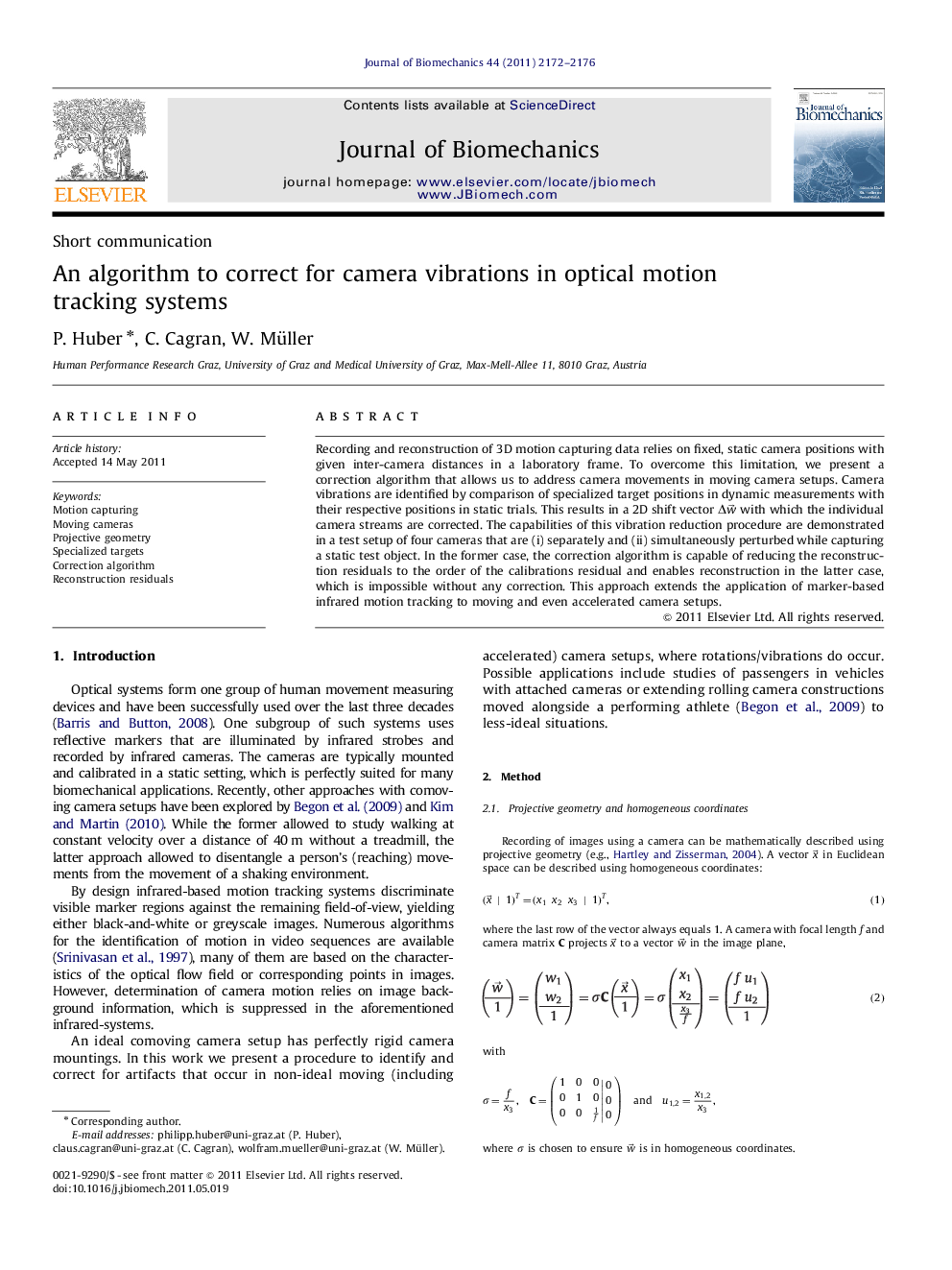| Article ID | Journal | Published Year | Pages | File Type |
|---|---|---|---|---|
| 10433343 | Journal of Biomechanics | 2011 | 5 Pages |
Abstract
Recording and reconstruction of 3D motion capturing data relies on fixed, static camera positions with given inter-camera distances in a laboratory frame. To overcome this limitation, we present a correction algorithm that allows us to address camera movements in moving camera setups. Camera vibrations are identified by comparison of specialized target positions in dynamic measurements with their respective positions in static trials. This results in a 2D shift vector Îwâ with which the individual camera streams are corrected. The capabilities of this vibration reduction procedure are demonstrated in a test setup of four cameras that are (i) separately and (ii) simultaneously perturbed while capturing a static test object. In the former case, the correction algorithm is capable of reducing the reconstruction residuals to the order of the calibrations residual and enables reconstruction in the latter case, which is impossible without any correction. This approach extends the application of marker-based infrared motion tracking to moving and even accelerated camera setups.
Related Topics
Physical Sciences and Engineering
Engineering
Biomedical Engineering
Authors
P. Huber, C. Cagran, W. Müller,
